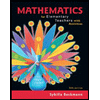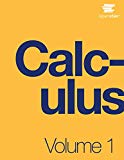
Mathematical Methods in the Physical Sciences
3rd Edition
ISBN: 9780471198260
Author: Mary L. Boas
Publisher: Wiley, John & Sons, Incorporated
expand_more
expand_more
format_list_bulleted
Concept explainers
Textbook Question
Chapter 9.4, Problem 3P
In the brachistochrone problem, show that if the particle is given an initial velocity
Expert Solution & Answer
Want to see the full answer?
Check out a sample textbook solution
Chapter 9 Solutions
Mathematical Methods in the Physical Sciences
Ch. 9.1 - The speed of light in a medium of index of...Ch. 9.1 - The speed of light in a medium of index of...Ch. 9.1 - The speed of light in a medium of index of...Ch. 9.2 - Write and solve the Euler equations to make the...Ch. 9.2 - Write and solve the Euler equations to make the...Ch. 9.2 - Write and solve the Euler equations to make the...Ch. 9.2 - Write and solve the Euler equations to make the...Ch. 9.2 - Write and solve the Euler equations to make the...Ch. 9.2 - Write and solve the Euler equations to make the...Ch. 9.2 - Write and solve the Euler equations to make the...
Ch. 9.2 - Write and solve the Euler equations to make the...Ch. 9.2 - Write and solve the Euler equations to make the...Ch. 9.2 - Write and solve the Euler equations to make the...Ch. 9.3 - Change the independent variable to simplify the...Ch. 9.3 - Change the independent variable to simplify the...Ch. 9.3 - Change the independent variable to simplify the...Ch. 9.3 - Change the independent variable to simplify the...Ch. 9.3 - Write and solve the Euler equations to make the...Ch. 9.3 - Write and solve the Euler equations to make the...Ch. 9.3 - Write and solve the Euler equations to make the...Ch. 9.3 - Write and solve the Euler equations to make the...Ch. 9.3 - Write and solve the Euler equations to make the...Ch. 9.3 - Write and solve the Euler equations to make the...Ch. 9.3 - Use Fermats principle to find the path followed by...Ch. 9.3 - Use Fermats principle to find the path followed by...Ch. 9.3 - Use Fermats principle to find the path followed by...Ch. 9.3 - Use Fermats principle to find the path followed by...Ch. 9.3 - Find the geodesics on a plane using polar...Ch. 9.3 - Prob. 16PCh. 9.3 - Find the geodesics on the cone x2+y2=z2. Hint: Use...Ch. 9.3 - Find the geodesics on a sphere. Hints: Use...Ch. 9.4 - Verify equations (4.2).Ch. 9.4 - Show, in Figure 4.4, that for a point like...Ch. 9.4 - In the brachistochrone problem, show that if the...Ch. 9.4 - Consider a rapid transit system consisting of...Ch. 9.4 - In Problems 5 to 7, use Fermats principle to find...Ch. 9.4 - In Problems 5 to 7, use Fermats principle to find...Ch. 9.4 - In Problems 5 to 7, use Fermats principle to find...Ch. 9.5 - (a) Consider the case of two dependent variables....Ch. 9.5 - Set up Lagranges equations in cylindrical...Ch. 9.5 - Do Problem 2 in spherical coordinates.Ch. 9.5 - Use Lagranges equations to find the equation of...Ch. 9.5 - Find the equation of motion of a particle moving...Ch. 9.5 - A particle moves on the surface of a sphere of...Ch. 9.5 - Prove that a particle constrained to stay on a...Ch. 9.5 - Two particles each of mass m are connected by an...Ch. 9.5 - A mass m moves without friction on the surface of...Ch. 9.5 - Do Example 3 above, using cylindrical coordinates...Ch. 9.5 - A yo-yo (as shown) falls under gravity. Assume...Ch. 9.5 - Find the Lagrangian and Lagranges equations for a...Ch. 9.5 - A particle moves without friction under gravity on...Ch. 9.5 - 2A hoop of mass M and radius a rolls without...Ch. 9.5 - Generalize Problem 14 to any mass M of circular...Ch. 9.5 - Find the Lagrangian and the Lagrange equation for...Ch. 9.5 - A simple pendulum (Problem 4) is suspended from a...Ch. 9.5 - A hoop of mass m in a vertical plane rests on a...Ch. 9.5 - For the following problems, use the Lagrangian to...Ch. 9.5 - For the following problems, use the Lagrangian to...Ch. 9.5 - For the following problems, use the Lagrangian to...Ch. 9.5 - For the following problems, use the Lagrangian to...Ch. 9.5 - For the following problems, use the Lagrangian to...Ch. 9.5 - For the following problems, use the Lagrangian to...Ch. 9.5 - For the following problems, use the Lagrangian to...Ch. 9.6 - In Problems 1 and 2, given the length l of a curve...Ch. 9.6 - In Problems 1 and 2, given the length l of a curve...Ch. 9.6 - Given 10 cc of lead, find how to form it into a...Ch. 9.6 - Prob. 4PCh. 9.6 - A curve y=y(x), joining two points x1 and x2 on...Ch. 9.6 - In Problem 5, given the volume, find the shape of...Ch. 9.6 - Integrate (6.2), simplify the result and integrate...Ch. 9.8 - (a) In Section 3, we showed how to obtain a first...Ch. 9.8 - Find a first integral of the Euler equation to...Ch. 9.8 - Find a first integral of the Euler equation to...Ch. 9.8 - Find a first integral of the Euler equation to...Ch. 9.8 - Write and solve the Euler equations to make...Ch. 9.8 - Write and solve the Euler equations to make...Ch. 9.8 - Write and solve the Euler equations to make...Ch. 9.8 - Find the geodesics on the cylinder r=1+cos.Ch. 9.8 - Prob. 9MPCh. 9.8 - Find the geodesics on the parabolic cylinder y=x2.Ch. 9.8 - In Problems 11 to 18, use Fermats principle to...Ch. 9.8 - In Problems 11 to 18, use Fermats principle to...Ch. 9.8 - In Problems 11 to 18, use Fermats principle to...Ch. 9.8 - In Problems 11 to 18, use Fermats principle to...Ch. 9.8 - In Problems 11 to 18, use Fermats principle to...Ch. 9.8 - In Problems 11 to 18, use Fermats principle to...Ch. 9.8 - In Problems 11 to 18, use Fermats principle to...Ch. 9.8 - In Problems 11 to 18, use Fermats principle to...Ch. 9.8 - Find Lagranges equations in polar coordinates for...Ch. 9.8 - Repeat Problem 19 if V=K/r.Ch. 9.8 - Write Lagranges equations in cylindrical...Ch. 9.8 - In spherical coordinates, find the Lagrange...Ch. 9.8 - A particle slides without friction around a...Ch. 9.8 - Write and simplify the Euler equation to make...Ch. 9.8 - Prob. 25MPCh. 9.8 - A wire carrying a uniform distribution of positive...Ch. 9.8 - Find a first integral of the Euler equation for...Ch. 9.8 - Write the Lagrange equation for a particle moving...
Additional Math Textbook Solutions
Find more solutions based on key concepts
The expression SP for S=2757 and transition matrix P=.5.5.2.8. Now explain, whether S is a stationary matrix or...
Finite Mathematics for Business, Economics, Life Sciences and Social Sciences
CHECK POINT I You deposit $1000 in a saving account at a bank that has a rate of 4%. a. Find the amount, A, of ...
Thinking Mathematically (6th Edition)
15-22: Qualitative versus Quantitative. Determine whether the following variables are qualitative or quantitati...
Using & Understanding Mathematics: A Quantitative Reasoning Approach (7th Edition)
Checkpoint1
Use the substitution method to solve this system:
Answers to Checkpoint exercises are found at the...
Mathematics with Applications In the Management, Natural and Social Sciences (11th Edition)
Sharpening Your Skills In Exercise 110, determine which sentences are statements. The Walking Dead is a popular...
Mathematics All Around (6th Edition)
Repeat problem P1-18 for the data shown in Fig P1.20
Introductory Mathematics for Engineering Applications
Knowledge Booster
Learn more about
Need a deep-dive on the concept behind this application? Look no further. Learn more about this topic, subject and related others by exploring similar questions and additional content below.Recommended textbooks for you
 Discrete Mathematics and Its Applications ( 8th I...MathISBN:9781259676512Author:Kenneth H RosenPublisher:McGraw-Hill Education
Discrete Mathematics and Its Applications ( 8th I...MathISBN:9781259676512Author:Kenneth H RosenPublisher:McGraw-Hill Education Mathematics for Elementary Teachers with Activiti...MathISBN:9780134392790Author:Beckmann, SybillaPublisher:PEARSON
Mathematics for Elementary Teachers with Activiti...MathISBN:9780134392790Author:Beckmann, SybillaPublisher:PEARSON
 Thinking Mathematically (7th Edition)MathISBN:9780134683713Author:Robert F. BlitzerPublisher:PEARSON
Thinking Mathematically (7th Edition)MathISBN:9780134683713Author:Robert F. BlitzerPublisher:PEARSON Discrete Mathematics With ApplicationsMathISBN:9781337694193Author:EPP, Susanna S.Publisher:Cengage Learning,
Discrete Mathematics With ApplicationsMathISBN:9781337694193Author:EPP, Susanna S.Publisher:Cengage Learning, Pathways To Math Literacy (looseleaf)MathISBN:9781259985607Author:David Sobecki Professor, Brian A. MercerPublisher:McGraw-Hill Education
Pathways To Math Literacy (looseleaf)MathISBN:9781259985607Author:David Sobecki Professor, Brian A. MercerPublisher:McGraw-Hill Education

Discrete Mathematics and Its Applications ( 8th I...
Math
ISBN:9781259676512
Author:Kenneth H Rosen
Publisher:McGraw-Hill Education

Mathematics for Elementary Teachers with Activiti...
Math
ISBN:9780134392790
Author:Beckmann, Sybilla
Publisher:PEARSON


Thinking Mathematically (7th Edition)
Math
ISBN:9780134683713
Author:Robert F. Blitzer
Publisher:PEARSON

Discrete Mathematics With Applications
Math
ISBN:9781337694193
Author:EPP, Susanna S.
Publisher:Cengage Learning,

Pathways To Math Literacy (looseleaf)
Math
ISBN:9781259985607
Author:David Sobecki Professor, Brian A. Mercer
Publisher:McGraw-Hill Education
01 - What Is A Differential Equation in Calculus? Learn to Solve Ordinary Differential Equations.; Author: Math and Science;https://www.youtube.com/watch?v=K80YEHQpx9g;License: Standard YouTube License, CC-BY
Higher Order Differential Equation with constant coefficient (GATE) (Part 1) l GATE 2018; Author: GATE Lectures by Dishank;https://www.youtube.com/watch?v=ODxP7BbqAjA;License: Standard YouTube License, CC-BY
Solution of Differential Equations and Initial Value Problems; Author: Jefril Amboy;https://www.youtube.com/watch?v=Q68sk7XS-dc;License: Standard YouTube License, CC-BY